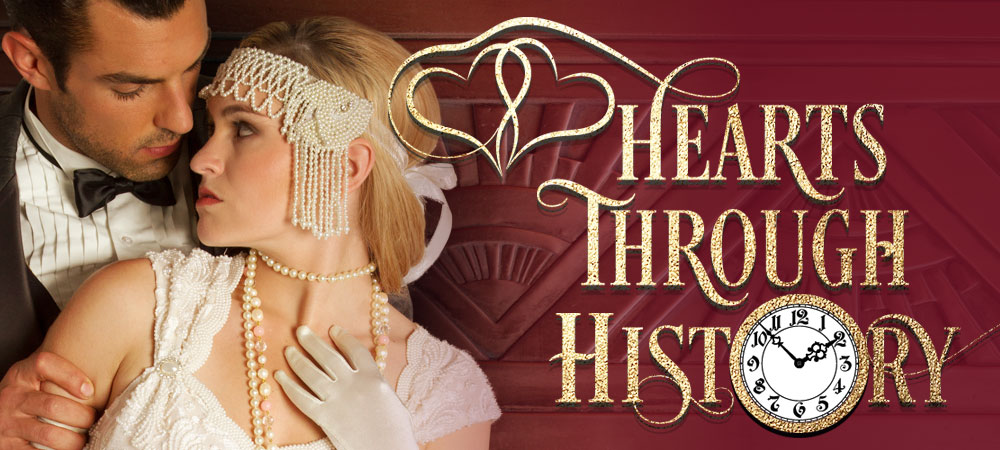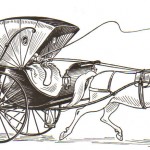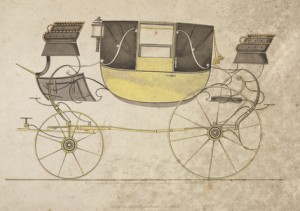Just as cars tend to be status symbols today, so were buggies of the 19th century.
There were several styles to choose from and they were all designed to send a certain message to the onlooker. First it was important that you had a carriage. Wagons and carts were for transporting goods so riding in a wagon did nothing to impress the neighbors
If you lived in the country and had a short commute to town then a two-wheeled vehicle known as a gig would be serviceable enough. Gigs were often favored by doctors because they were light, fast, and could be drawn by a single horse, even if they weren’t all that comfortable. But given the lack of ornamentation and design, it wouldn’t raise you in the estimation of the townsfolk.
Early in the 19th century, the curricle was of the same order but because it required two well-matched horses, it put the owner in a higher category much like ownership of a sports car does today. Like the sports car, the curricle was light and therefore could go quite fast when drawn by two horses. And like the sports car, it took more skill by the owner to drive it since it required the management of those horses. It was the preferred vehicle of the “man about town.” Later in the 19th century the curricle was replaced by the cabriolet (where the word cab originated). This vehicle was similar in size to the curricle and also had two wheels but it needed only one horse to draw it and thus, like improvements in cars today, this made the carriage more economical, yet just as fast. They were seen as suitable for getting around the tight streets of a city and thus were often used as hired “cabs” though they were known to topple on occasion when making a tight corner.

Barouches and phaetons where next in the hierarchy of distinction among the carriage set. They started out as two wheeled vehicles with a collapsible top, known also as a calash, and drawn by a single horse. Then came the four-wheeled vehicles with a collapsible top drawn by two horse. Owners of barouches and phaetons generally had a coachman to drive it so that they could huddle under the canopy should the weather turn bad. Because of the use of a coachman and the need for two horses, owning a four wheeled barouche put you automatically in a higher bracket.
Landaus were a popular variation of the barouche with a front and back collapsible roof and could seat up to four. They were drawn by two or four matched horses. There were seven State landaus in use between 1832-1870 by the Royal family. They were favored by the wealthy because on nice weather days their tops would be collapsed and the British people could have a nice view of the passengers and the passengers a nice view of their admirers. Landaus could be likened to the Mercedes-Benz of their time as their origin was German.
By Victorian times barouches had morphed into four-wheeled brougham (pronounced “broom” or “brohm”) which had the advantage of a closed cab. These coaches had seating for two. though two additional seats were sometimes folded away in the front corners. They had a glazed window in the front of the cab for people to look out. The coachman, of course, still sat outside on a box in all sorts of weather . There could also be a platform in the back if you had footmen and the doors had space for a coat of arms if one desired to announce themselves, which most owners of broughams did.
Thus brougham’s were the top status symbols. The brougham was named after Lord Brougham who popularized it among his class.
The second carriage in a wealthy family was often the Victoria which was an open carriage with four wheels and a collapsible top much like the barouche or phaetons of earlier years but the style of the carriage had more curves to it. It was often seen as a lady’s carriage. Like the landau, it was wonderful for driving in the park for it allowed you to see and be seen.
Light weight, four wheeled door-less carriages known as surreys, were also popular in the late 19th century and into the 20th century in America. Though open, they had a canopy on top, e.g. surrey with the fringe on top, to provide minimal protection from the elements and were drawn by either one or two horses.
Old broughams, when traded in for the newest models, often ended up as cabs for hire, once the coat of arms were scrubbed off. By the late 19th century, cabriolets had been  replaced by Hansom Cabs for the hiring because Hansom Cabs were also two wheeled vehicles pulled by one horse making them economical to operate, but with a lower center of gravity than the cabriolet and thus better at turning. With the coachman seated on a platform at the back, he looked over the top of the enclosed coach to the street scene below. Passengers were tucked inside the enclosed cab but could talk to the driver, and pay him, through a trap door in the roof. Taking cabs was expensive and usually done when residing in the city if your carriage was unavailable, in use by other members of your family, or you simply got caught unexpectedly in the rain.
replaced by Hansom Cabs for the hiring because Hansom Cabs were also two wheeled vehicles pulled by one horse making them economical to operate, but with a lower center of gravity than the cabriolet and thus better at turning. With the coachman seated on a platform at the back, he looked over the top of the enclosed coach to the street scene below. Passengers were tucked inside the enclosed cab but could talk to the driver, and pay him, through a trap door in the roof. Taking cabs was expensive and usually done when residing in the city if your carriage was unavailable, in use by other members of your family, or you simply got caught unexpectedly in the rain.
None of these carriages were built for extended journeys. For that a coach was needed such as a stage coach. (https://www.heartsthroughhistory.com/riding-the-stage-getting-around-in-the-old-west/ ) But for getting around town, for seeing the countryside, and being seen by those who mattered, there was nothing like a well-polished carriage to advertise your wealth. Hence the term “the carriage trade” to denote those who had money to spend. Any other carriages come to mind? What carriage will your heroine drive?
Sources: What Jane Austen Ate and Charles Dickens Knew by Daniel Pool, pp. 144-147; Wikepedia; and for a glossary-http://www.arnkarnk.plus.com/glossary.htm
Images: Barouche, Cabriolet, Brougham: From Wikepedia Commons as follows: Donated to the Wikimedia Foundation and released into the public domain by Pearson Scott Foresman. This applies worldwide. In case this is not legally possible: Scott Foresman grants anyone the right to use this work for any purpose, without any conditions, unless such conditions are required by law. Landau: PD-US This image (or other media file) is in the public domain because its copyright has expired. This applies to Australia, the European Union and those countries with a copyright term of life of the author plus 70 years. Hanson Cab PD-US-Art This work is in the public domain in those countries with a copyright term of life of the author plus 80 years or less. Note that Mexico has a term of 100 years and does not implement the rule of the shorter term, so this image may not be in the public domain in Mexico. Côte d’Ivoire has a general copyright term of 99 years, but it does implement the rule of the shorter term.
Anne Carrole writes about men who have grit, integrity and little romance on their mind and the women who love them. You can check out her contemporary romance, Falling for a Cowboy, and western historical romance, Saving Cole Turner, at Amazon.com, BarnesandNoble.com or Kobobook.com. You can friend, follow, or find Anne on Facebook, Twitter, www.annecarrole.com , or at the western historical facebook fan site, Love Western Romances.





Great post! Very informative!
Thanks for the great post on carriages. Love looking at them.
Very interesting post! So interesting to see the pictures along with the descriptions! It would be fun to give them a try, don’t you think?
Into my research file this goes! Thanks for an enjoyable read, Anne. Wonderful illustrations, too.
A really useful post Anne, sometimes it hard to remember what sort of carriage/coach various people in the Regency/Victorian period would have driven. Going into my research filing.